Here’s a story I want to do before it gets too old (it’s almost 2 months already). It’s taken me a while to finish the research, and I’m still missing one critical piece of information on the instrument’s label (or label of the other specimens) – but I’ll eventually get that and add it later (sloppy, I know, but that’s how this blog thing seems to work).
These pictures were recently sent to me by a couple different friends. I’m not sure if that’s the owner himself, but apparently he sent the photos to a couple of guitar stores looking for information (including Gryphon). UPDATE 8/1/14: As I suspected, this was Stewart Hart in Maine, then acting custodian of the instrument for owner Jeff Hart his cousin.
I confirmed that this is indeed a new (third, I believe?) specimen of the hilariously over-the-top “pushmi-pullyu” harp guitar. We think that these were all made by the Harmony company (this would have been early, in their high-end custom shop). As I said above, I’ve never seen the proof (label image), though it is more than likely.
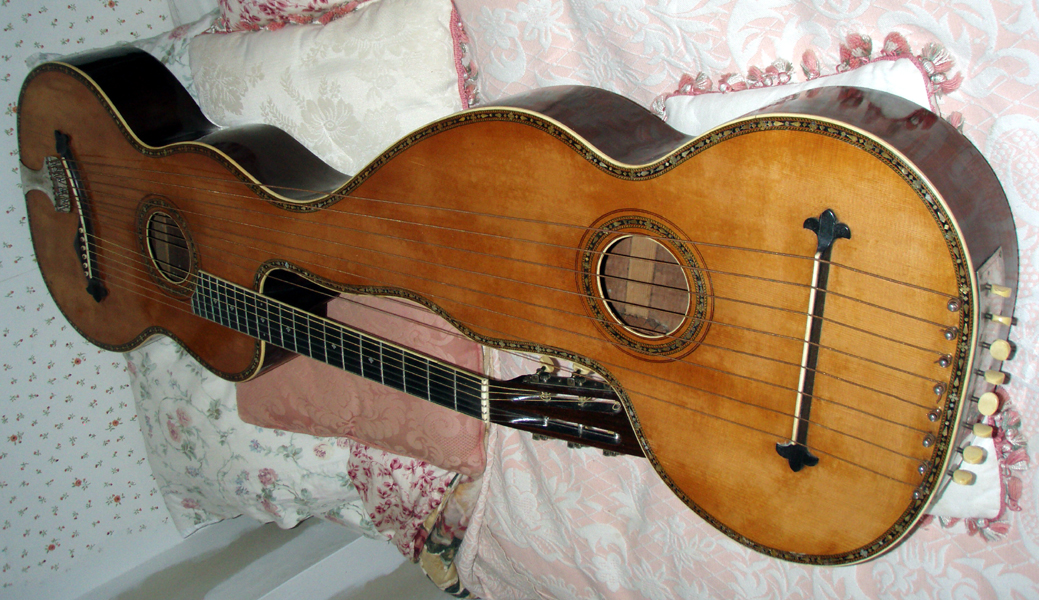
This unmistakable instrument is familiar to most of us. I’m still trying to remember/track down my previous awareness of it (feel free to help!). I vaguely recall some old book or article showing one of these. I don’t remember if that writer knew, or only speculated that it was made by Harmony. More recently, when I saw the Dangerous Curves book, I also remember thinking that theirs was a new specimen. Perhaps I, or someone, had compared images of the 2 specimens and noted differences – ornamentation, or something else. The specimen loaned for the Dangerous Curves exhibit in Boston, which appears in the book, was a very nice one.
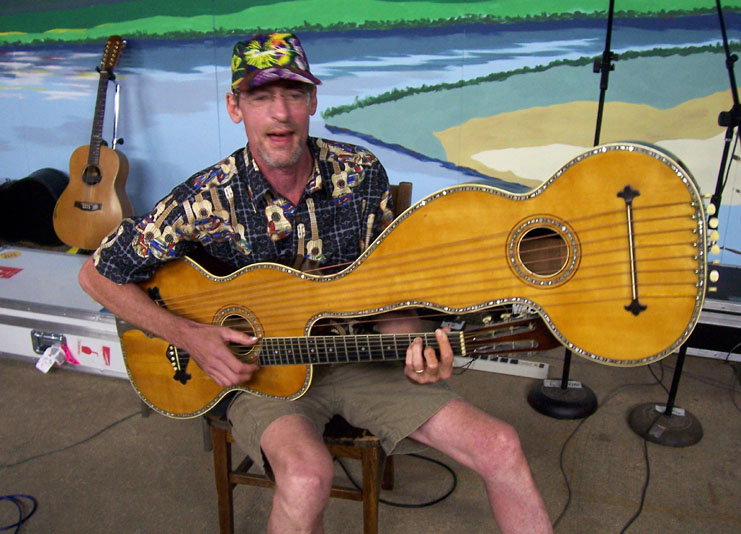
The owners (Alex and Dave Usher) later brought it to the Winfield festival in 2006, where a newsman snapped Stephen Bennett playing it for the local paper, and roving HG.net reporter Joe Morgan captured these images. That’s the owner, Dave, at left. The new one above looks like an exact duplicate of the Usher’s instrument, with the very fancy and intricate pearl binding. As I said, I can’t seem to locate an image or notes on any other specimen(s). Can anyone help me out here? I’d like to contact the Ushers for label info, and of course, the owner of the recent new specimen. And if anyone can track down the older published image/specimen that I’m thinking of, please let me know.
It’s amazing, frankly, that more than one of these was ever made. I mean, seriously! It’s equally mind-boggling that it was ever dreamt up, designed and patented. Perhaps it had something to do with the fact that the inventor was blind. True! The patentee, one Paul Gardie, is somewhat infamous from an appearance in The Cadenza magazine. But this photo has been floating around for ages with no one really knowing the circumstances. With the help of the new BMG Bibliography by the heroic Jeff Noonan, and (somewhat) complete digital images and PDFs of the Cadenzas & Crescendos (thanks to Arian Sheets and myself, Paul Ruppa, and later, Paul Fox), I was able to find several entries for Gardie in the journals.
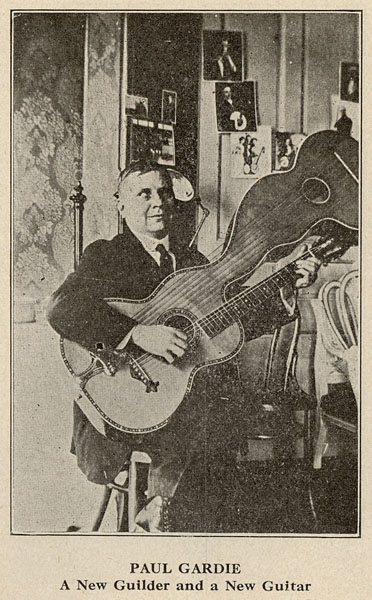
The first appearance was in the June 1915 Cadenza journal, in their coverage about the Guild Convention held the previous month. This is where the infamous photo (first) appeared. The multi-page minutes and activities of the convention first mention him being admitted as a new Professional Member and include a short speech he made to the group about a Chicago mandolin club he had recently taken over leadership of. He is later pictured with his HG, a specimen seemingly identical to the Usher instrument. Nothing is said about the exceedingly strange “new instrument.”
A month later (July), the competing Crescendo journal does their report of the convention, where, interestingly, they list the Harmony Mfg Co and Paul Gardie separately as exhibitors (coincidence? I think not). They highlight Gardie as “one of the especially interesting features,” describing him as “the blind guitarist from Chicago” and the “inventor of the Gardie Orchestral Harp-Guitar.” They praise his instrument very highly, now noting the unusual shape, but without being disparaging. No mention is made as to the manufacturer. They describe him as an excellent player (“one of the finest we have heard”), despite the fact that he was unable to see the fingerboard. He played both the “better class” of music but also several ragtime pieces (“unusual on the guitar”). What a sight (and sound) that must have been! I can’t tell from the photo what his strings were – the top strings seem to be very thin, indicating steel, but these old images are always misleading. Guild members played their “better class” of music almost exclusively on gut strings, and I would suspect Gardie did the same – even with the ragtime repertoire.
One month later, in the August Crescendo, a presumably different reviewer gives an even better review of Gardie’s performance at the Convention banquet. Clearly, he was the hit of the convention.
Several months later (Jan 1916), Crescendo ran the same Cadenza photo, now calling Gardie “the phenomenal harp-guitarist” (spelling his name wrong; Gardy).
Later that year (Sept 1916), Cadenza mentions an upcoming November recital concert with Gardie as one of two soloists, “with orchestra assisting.” He seems to have kept himself busy after this, as there is next a 1922 patent for a new banjo head he invented, and in 1928, the Music Trade Review had an announcement of Harmony’s new line of Roy Smeck instruments (hmmm, there’s Harmony again), with the demonstrations – on all instruments – being done by Gardie. So clearly, Gardie was still player enough to pinch-hit for the great vaudeville star.
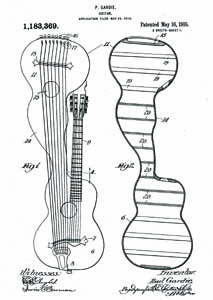
Getting back to the matter at hand, it seems to me that this instrument is really the “Gardie Orchestral Harp Guitar,” not the Harmony harp guitar (even though they may have built more than one). Presumably, Gardie commissioned or partnered with Harmony to build him the first. Beyond the Cadenza and Crescendo entries, our smoking gun is the patent – applied for on May 24, 1915 (before its first appearance at the Guild Convention) and issued to Gardie on May 16, 1916. Besides the infamous body outline with its full, second guitar-shaped bass sound chamber, the patent features an intriguing hollow neck (not the only time this feature appears in patents). This was to provide even more resonant air chamber volume. A second page of drawings shows the 2 body chambers with full open airways through the neck, but I can’t imagine how the headstock could’ve been hollowed out anywhere. Perhaps one of John Thomas’ famous guitar X-rays is in order! Again, hearkening back to my first blog on patents, I find it inexplicable that the patent was unknown to me until exactly one year ago (submitted by my colleague Paul Fox). Witnesses on the patent include a C (?) Gaylord, Irwin Bowman, E. D. Steele, A. C. Fischer, and D. C. Thorsen – are any of these Harmony employees? The detailed patent drawing must surely be patterned on the actual finished instrument. Assuming that Harmony built Gardie’s own instrument, did they put their standard label in it? And is one of the surviving instruments his? My guess would be yes. I still wonder whose design it is – and what was their reasoning?! As a scholar and historian, I’m of course fascinated and seriously interested in this aspect. But the devil in me can’t resist the obvious jokes about whether it turned out like this because Gardie couldn’t see what he was drawing, or because the builders knew he couldn’t see it, so made it really goofy.
Shame on me.

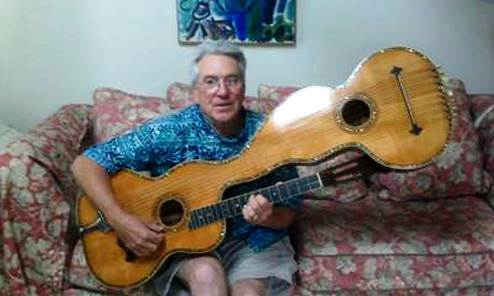
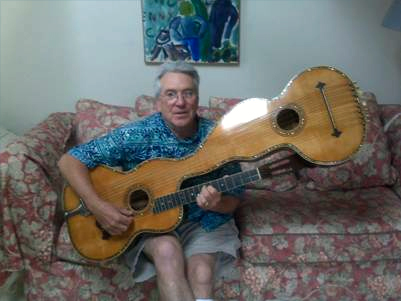
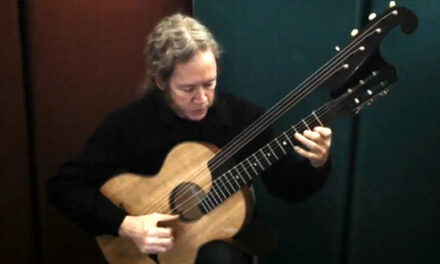
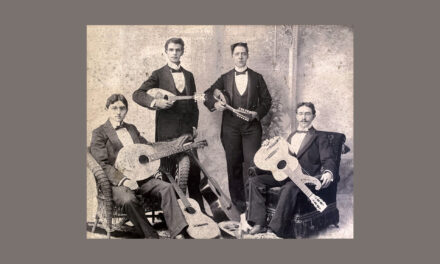
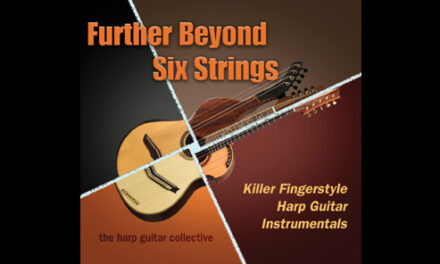
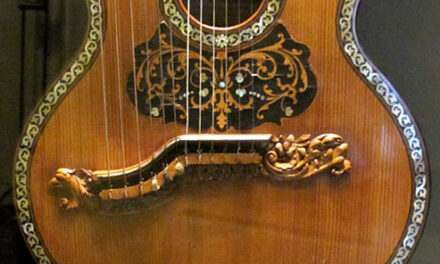
I put a video of this guitar being played on Facebook. https://www.facebook.com/video.php?v=804674292904219
We played “No Place Like Home” Recorded at the Folk School in Maplewood, Mo.on Aug 7, 2010.
Alexandra M. Usher is playing one of the first Zimmerman autoharps sold in the U.S. in the early 1880’s.
Hey, I can’t view your site properly within Opera, I actually hope you look into fixing this.
Thanks, whoever you are. I will look into it, though that doesn’t mean it’s fixable. Thanks for your interest.